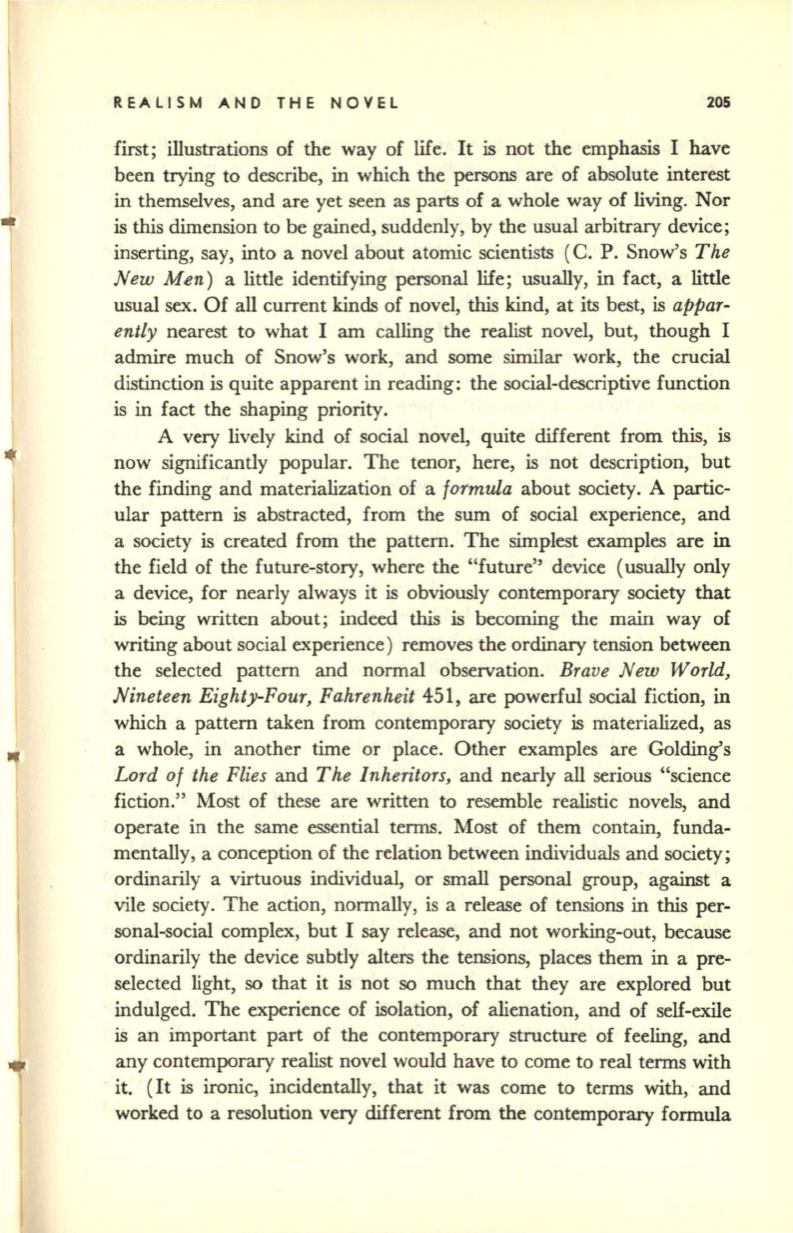
•
•
REALISM AND THE NOVEL
205
first; illustrations of the way of life. It is not the emphasis I have
been trying to describe, in which the persons are of absolute interest
in themselves, and are yet seen as parts of a whole way of living. Nor
is this dimension to be gained, suddenly, by the usual arbitrary device;
inserting, say, into a novel about atomic scientists (C. P. Snow's
The
New Men)
a little identifying personal life; usually, in fact, a little
usual sex. Of .all current kinds of novel, this kind, at its best, is
appar–
ently
nearest to what I am calling the realist novel, but, though I
admire much of Snow's work, and some similar work, the crucial
distinction is quite apparent in reading: the social-descriptive function
is in fact the shaping priority.
A very lively kind of social novel, quite different from this, is
now significantly popular. The tenor, here, is not description, but
the finding and materialization of a
formula
about society. A partic–
ular pattern is abstracted, from the sum of social experience, and
a society is created from the pattern. The simplest examples are in
the field of the future-story, where the "future" device (usually only
a device, for nearly always it is obviously contemporary society that
is being written about; indeed this is becoming the main way of
writing about social experience ) removes the ordinary tension between
the selected pattern and normal observation.
Brave N ew World,
Nineteen Eighty-Four, Fahrenheit
451, are powerful social fiction, in
which a pattern taken from contemporary society is materialized, as
a whole, in another time or place. Other examples are Golding'S
Lord of the Flies
and
The Inheritors,
and nearly all serious "science
fiction." Most of these are written to resemble realistic novels, and
operate in the same essential terms. Most of them contain, funda–
mentally, a conception of the relation between individuals and society;
ordinarily a virtuous individual, or small personal group, against a
vile society. The action, normally, is a release of tensions in this per–
sonal-social complex, but I say release, and not working-out, because
ordinarily the device subtly alters the tensions, places them in a pre–
selected light, so that it is not so much that they are explored but
indulged. The experience of isolation, of alienation, and of self-exile
is an important part of the contemporary structure of feeling, and
any contemporary realist novel would have to come to real terms with
it. (It is ironic, incidentally, that it was come to terms with, and
worked to a resolution very different from the contemporary formula


